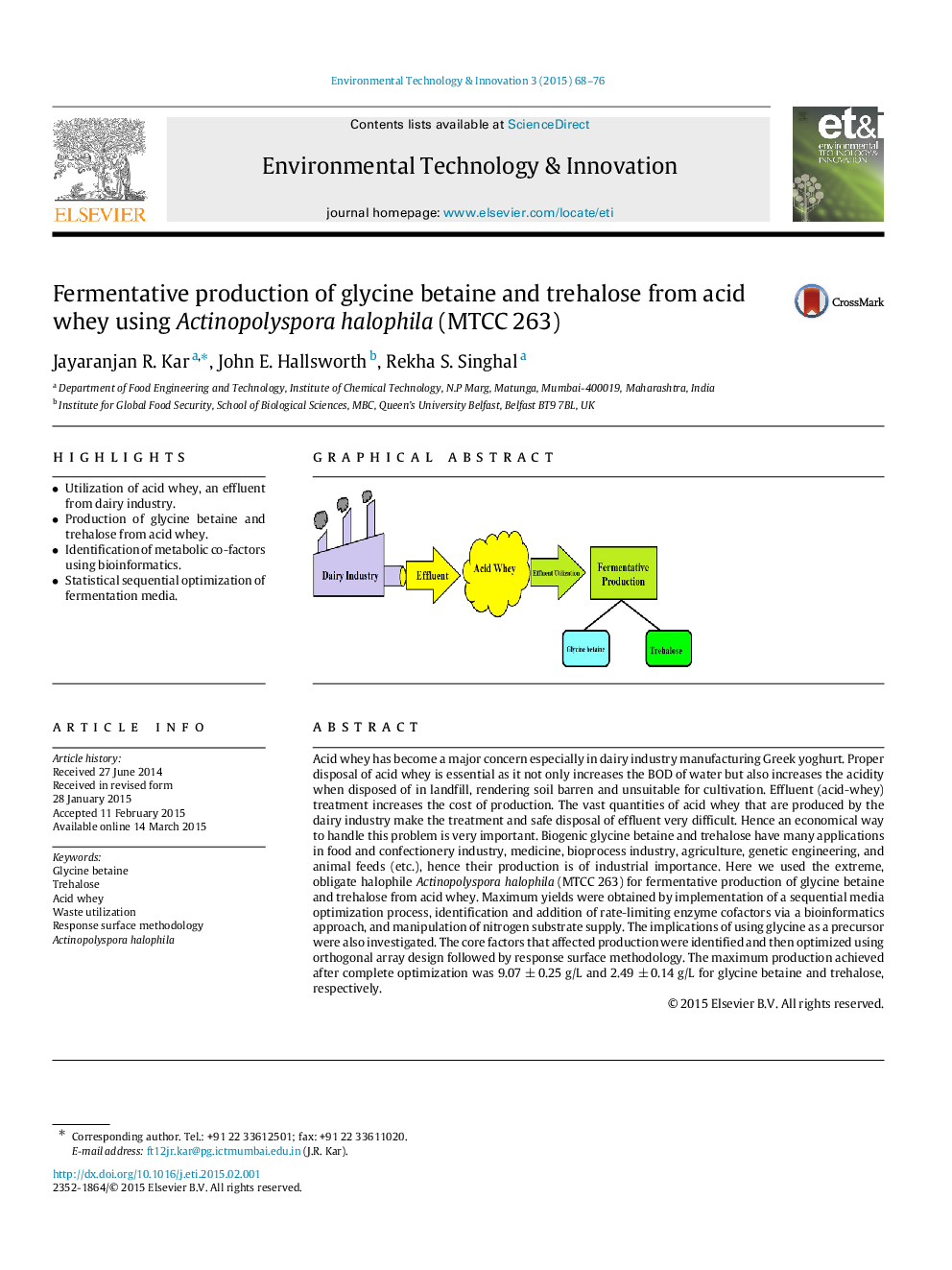| کد مقاله | کد نشریه | سال انتشار | مقاله انگلیسی | نسخه تمام متن |
|---|---|---|---|---|
| 4428177 | 1619285 | 2015 | 9 صفحه PDF | دانلود رایگان |

• Utilization of acid whey, an effluent from dairy industry.
• Production of glycine betaine and trehalose from acid whey.
• Identification of metabolic co-factors using bioinformatics.
• Statistical sequential optimization of fermentation media.
Acid whey has become a major concern especially in dairy industry manufacturing Greek yoghurt. Proper disposal of acid whey is essential as it not only increases the BOD of water but also increases the acidity when disposed of in landfill, rendering soil barren and unsuitable for cultivation. Effluent (acid-whey) treatment increases the cost of production. The vast quantities of acid whey that are produced by the dairy industry make the treatment and safe disposal of effluent very difficult. Hence an economical way to handle this problem is very important. Biogenic glycine betaine and trehalose have many applications in food and confectionery industry, medicine, bioprocess industry, agriculture, genetic engineering, and animal feeds (etc.), hence their production is of industrial importance. Here we used the extreme, obligate halophile Actinopolyspora halophila (MTCC 263) for fermentative production of glycine betaine and trehalose from acid whey. Maximum yields were obtained by implementation of a sequential media optimization process, identification and addition of rate-limiting enzyme cofactors via a bioinformatics approach, and manipulation of nitrogen substrate supply. The implications of using glycine as a precursor were also investigated. The core factors that affected production were identified and then optimized using orthogonal array design followed by response surface methodology. The maximum production achieved after complete optimization was 9.07 ± 0.25 g/L and 2.49 ± 0.14 g/L for glycine betaine and trehalose, respectively.
Figure optionsDownload as PowerPoint slide
Journal: Environmental Technology & Innovation - Volume 3, April 2015, Pages 68–76